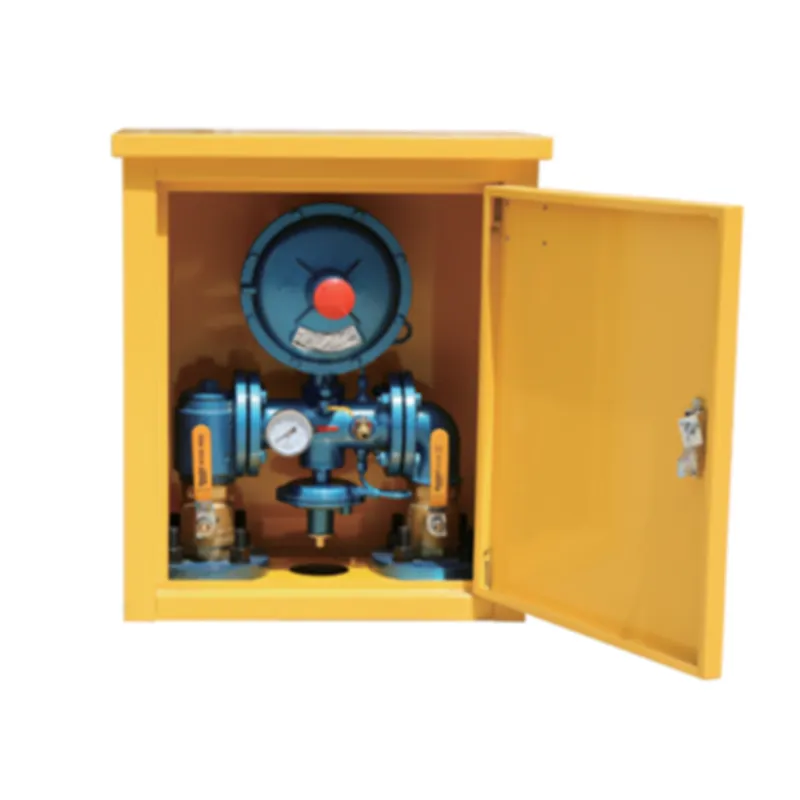
Nov . 26, 2024 13:06
Back to list
Pressure Reduction Station Operations and Maintenance Guide
Pressure Reduction Station An Essential Component of Gas Infrastructure
In the realm of natural gas distribution, the functionality and efficiency of a pressure reduction station (PRS) are paramount. A pressure reduction station is designed to lower the pressure of natural gas from a high-pressure transmission pipeline to a lower pressure suitable for distribution to consumers. This process is essential for ensuring safety, efficiency, and sustainability within the gas supply system.
Importance of Pressure Reduction Stations
Natural gas is transported over vast distances through high-pressure pipelines, which help maintain its flow and reduce energy losses. However, when this gas reaches its destination—be it residential areas, commercial establishments, or industrial sites—the pressure must be significantly reduced. Enter the pressure reduction station, which plays a crucial role in this transformation. By adjusting the pressure to safe levels, PRS facilities ensure that the gas can be safely utilized by end-users without risk of leaks, explosions, or damage to appliances.
Components of a Pressure Reduction Station
Typically, a pressure reduction station consists of various components designed to regulate gas pressure effectively. These include
.
2. Filters To ensure the gas is clean and free from impurities, filters are installed to remove particulates that can damage downstream equipment.
محطة تخفيض الضغط

3. Safety Devices Safety is paramount in gas distribution. PRS facilities include overpressure protection devices, such as pressure relief valves, which automatically vent excess gas if the pressure exceeds safe thresholds.
4. Flow Meters To monitor the amount of gas being distributed, flow meters provide real-time data, allowing operators to track consumption and adjust supply as necessary.
Operational Considerations
The operation of a pressure reduction station requires skilled personnel who have a deep understanding of gas dynamics and regulatory compliance. The PRS must be regularly maintained and monitored to ensure its components function optimally. This includes routine inspections, testing of safety devices, and maintenance of regulators and filters. Moreover, advancements in technology offer opportunities for improving these operations through automation and smart monitoring systems.
Environmental Impact and Efficiency
Gas infrastructure, including pressure reduction stations, is continually evolving to enhance efficiency and minimize environmental impact. Innovations in design and technology have led to more efficient PRS installations, reducing the energy required for pressure regulation and lowering emissions associated with gas distribution. Furthermore, the integration of renewable energy sources in natural gas systems is being explored, with pressure reduction stations serving as potential hubs for blending hydrogen or biogas into existing pipelines.
Conclusion
In summary, pressure reduction stations are critical components of the natural gas distribution network. They not only ensure the safe delivery of gas to consumers by regulating pressure levels but also contribute to the overall efficiency of energy management. With ongoing advancements in technology and a focus on sustainability, PRS facilities will continue to evolve, playing a vital role in the future of energy delivery. As the global demand for cleaner energy solutions increases, the significance of well-designed pressure reduction stations will only grow, highlighting their integral role in a safe and efficient gas infrastructure.
Latest news
-
Safety Valve Spring-Loaded Design Overpressure ProtectionNewsJul.25,2025
-
Precision Voltage Regulator AC5 Accuracy Grade PerformanceNewsJul.25,2025
-
Natural Gas Pressure Regulating Skid Industrial Pipeline ApplicationsNewsJul.25,2025
-
Natural Gas Filter Stainless Steel Mesh Element DesignNewsJul.25,2025
-
Gas Pressure Regulator Valve Direct-Acting Spring-Loaded DesignNewsJul.25,2025
-
Decompression Equipment Multi-Stage Heat Exchange System DesignNewsJul.25,2025

